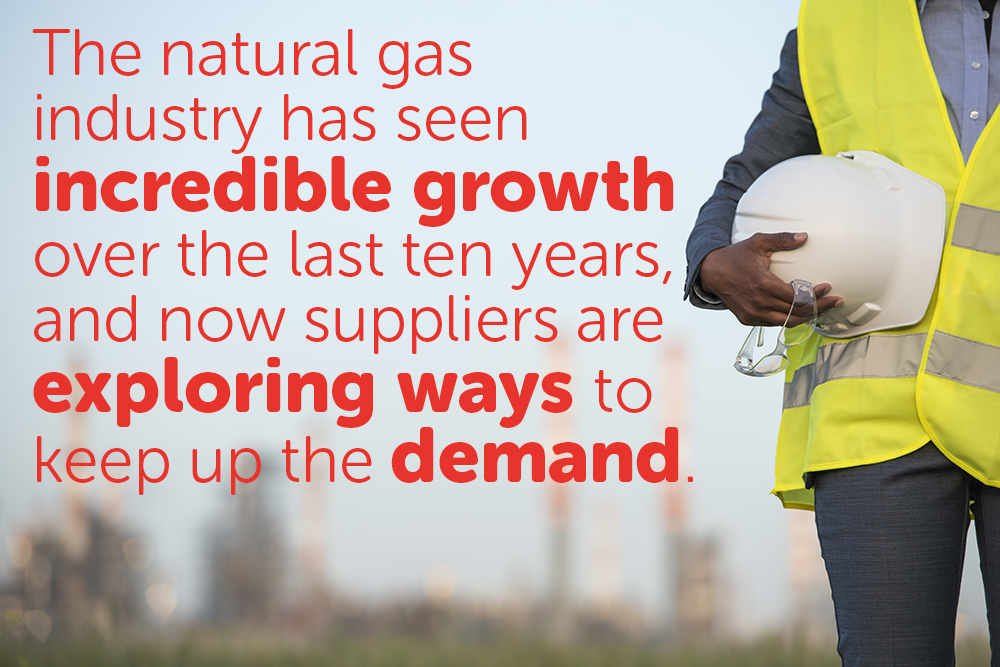
Coal continues to decline, but the US natural gas industry has seen incredible growth over the last ten years. Suppliers are exploring ways to keep up the demand.
According to Deloitte, increasing domestic natural gas consumption depends heavily on the power generation, industrial and transport sectors. In the article, Seeking growth: What will drive US natural gas demand? Deloitte Partner, John England, addresses these sectors.
“Power generation: Demand growth from fuel switching is likely to be limited. Power generators have benefited from low-cost gas and some aging coal infrastructure has been retired. With increased renewable competition, flat electricity demand, and potentially rising gas prices, power generation utilities are unlikely to be a large part of future consumption growth.
Industrial: Industrial demand is projected to increase, but the response may be muted as economic conditions in the United States remain uncertain. Petrochemicals will likely be the most visible source of growth, but there are a number of other gas-intensive industries that could contribute as well.
Transport: Of all sectors, transport has the most potential for disruptive growth, affecting both the integrated oil and natural gas value chains. Countries around the world, including the United States, are moving toward a less carbon-intensive transport industry, and natural gas could displace diesel and bunker fuel in the long term.”
Growth Scenarios for Natural Gas
Mr. England also proposes that three possible growth scenarios are:
- Flat demand growth: Lower GDP growth, declining power-generation consumption, flat industrial demand, and slow export growth.
- Moderate demand growth: Low-cost gas displacing some coal, industrial consumption consistent, and exports reaching capacity.
- Sustained demand growth: Low domestic natural gas prices and strong global economic growth, leading to a boost in domestic consumption and exports.
Three Strategies to Delight Customers
Utilities are paying more attention to customer service and engagement to deepen their relationships with new and existing customers. In K.C. Boyce’s article, Three Things Utilities Can Do to Delight Their Customers, he suggests that utilities can create moments that catch customers off guard—in a good way to help transform customers into advocates.
Boyce describes three strategies:
- Invite new customers into a relationship – he refers to this as “customer onboarding,” making them aware of various benefits such as bill payment options, apps, and where to report an outage.
- Offer personalized recommendations – gas and electric utilities have the opportunity to connect customers with valuable products and services during service touchpoints.
- Look for areas where you can make life easier for your customers – increased customer use of energy products, such as smart thermostats, electric vehicles and rooftop solar offer opportunities for utilities to enhance the lives of their customers.
HomeServe, a leading provider of utility-sponsored repair plans, offers personalized recommendations and providing solutions for customers to assist utilities with number 2 and 3 above.
Homeowners utilize natural gas for heat, hot water and to power appliances. Basic homeowners insurance often does not cover the breakdown of these systems, which can be sources of major expense and inconvenience. HomeServe plans give homeowners the peace of mind that they’ll get priority repair service, and not have to deal with expensive repair bills when a breakdown happens. HomeServe serves over 3.7 million customers across North America.
Our plans protect homeowners against the expense and inconvenience of home emergencies by providing affordable coverage and quality local service. HomeServe’s partnership with American Public Gas Association (APGA) enables APGA’s more than 700 members across the country to offer the homeowners they serve optional repair plans for gas piping systems, water heaters, heating systems and more. For more information contact us.

